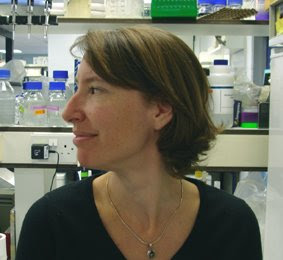Subject: Launch of OASPA
Date: Tue, 14 Oct 2008 09:25:23 -0700
From:
feedback@openaccesspublishing.orgApology for cross posting:
ANNOUNCING THE LAUNCH OF THE OPEN ACCESS SCHOLARLY PUBLISHERS ASSOCIATION, OASPA
14 October 2008, London. The Open Access Scholarly Publishers Association, OASPA, announces its official launch today in conjunction with an OA Day celebration hosted by the Wellcome Trust in London. The mission of OASPA is to support and represent the interests of Open Access (OA) journals publishers globally in all scientific, technical, and scholarly disciplines through an exchange of information, setting of industry standards, advancing business and publishing models, advocating for gold OA journals publishing, education and the promotion of innovation.
From having first emerged as a new publishing model over a decade ago, OA publishing has become an embedded feature of the scholarly publishing landscape: The Directory of Open Access Journals (DOAJ) lists over 3500 peer-reviewed journals; a growing number of professional organizations offer OA publications; university libraries increasingly support OA publishing services; funding organizations support and encourage OA publishing; and a long tail of independent editorial teams and societies now publish their titles OA. Professional OA publishers such as BioMed Central and the Public Library of Science (PLoS) have been in business for over five years, while some scientist/scholar publishers (editorial teams operating independently of a professional publisher) have published their OA journals for a decade or more. Moreover, a number of traditional publishing houses are now engaging in Open Access activities, the recent acquisition of BioMed Central by Springer and the SAGE-Hindawi partnership being two cases in point. By bringing together those who share an interest in developing appropriate business models, tools and standards to support OA journals publishing, it is hoped that success in these areas can be achieved more quickly to the benefit of not only OASPA members, but more importantly, for the scholarly community that OA publishers serve.
Membership in OASPA is open to both scholar publishers and professional publishing organizations, including university presses and for profit and non-profit organizations. Members are expected to demonstrate a genuine interest in OA journals publishing by having signed either the Berlin or Budapest Declarations and must publish at least one full OA journal. Other individuals and organizations who support OA journals publishing or who are interested in exploring opportunities are also welcome. Membership criteria and an application form can be found on the OASPA website, www.oaspa.org.
The founding members of OASPA represent a broad spectrum of OA publishers and include: BioMed Central, Co-Action Publishing, Copernicus, Hindawi Publishing Corporation, Journal of Medical Internet Research (Gunther Eysenbach), Medical Education Online (David Solomon), the Public Library of Science (PLoS), SAGE, SPARC Europe and Utrecht University Library (Igitur). Representatives from each of these publishers will form an interim board until a first General Meeting is held during 2009.
Open Access Scholarly Publishers’ Association, OASPA, is launched today 14 October 2008 in response to long-time informal discussions among Open Access publishers, and aims to represent the interests of OA journals publishers globally. For more information about the organization, visit the OASPA website at: www.oaspa.org.
The Wellcome Trust is the largest charity in the UK. It funds innovative biomedical research, in the UK and internationally, spending over £600 million each year to support the brightest scientists with the best ideas. The Wellcome Trust supports public debate about biomedical research and its impact on health and wellbeing.
Open Access (OA) scholarly publication refers to the dissemination of peer-reviewed manuscripts containing original research or scholarship immediately upon publication, at no charge to user groups, without requiring registration or other restrictions to access. OA publications also allow users to "copy, use, distribute, transmit and display the work publicly and to make and distribute derivative works, in any digital medium for any responsible purpose, subject to proper attribution of authorship...."
Press Contact:
Caroline Sutton
Tel/skype: +46 (0)18 495 1126
Cell: +47 90 69 05 06
Caroline.Sutton@co-action.net --
For background information, check out
the related posts on OAN.






















